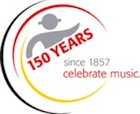David's Tip of the Day: Nose - Why it Commonly Opens
For most students, the slippery slope of opening the nose while playing the harmonica begins unconsciously. Their body learns that if the nose is opened, the issues of unintentional bending of holes 1 and 2 are fixed. When opened, the tuned size of the mouth cavity that was causing issues with that hole/note is combined with the nasal cavity, creating a cavity that's lower in pitch than those reeds can be bent to, which results in better tone and no possibility of unintentional bending.
The side effect though is obvious, you're sucking in tons of air through your nose. If the nose is fully open, you can run out of air as quickly as one second if you're pushing with your diaphragm. If the nose is closed, you can play a note commonly up to one minute if you play softly and start with empty lungs (the record is held by a student of mine... he got up to two and a half minutes).
Your task today is to play 4 draw, then 3 draw, and then 2 and 1 draw. Pay close attention to see if your nose opens on holes 2 or 1. You may want to look in a mirror to see if your nose flairs (commonly a sign that your nose has opened).
Tomorrow I'll share some tips on how to close the nose and we'll finish the series of how to use the opening and closing of the nose to our advantage.

